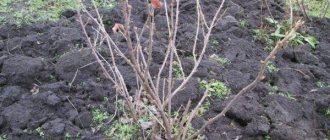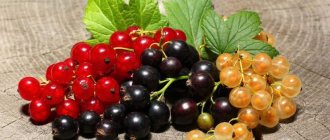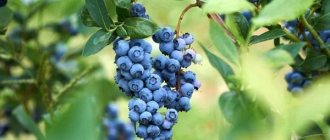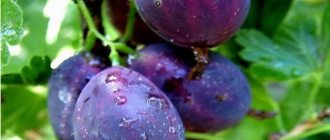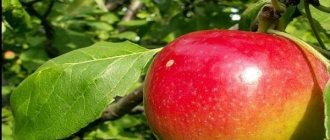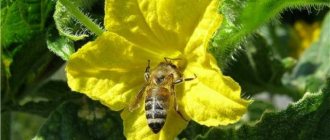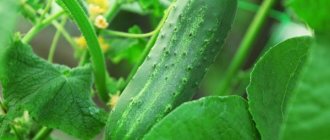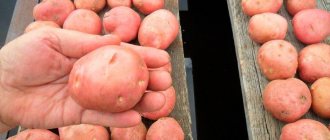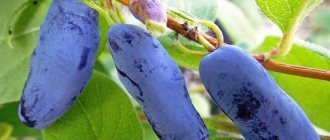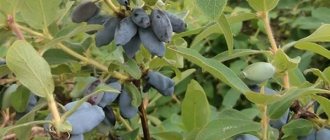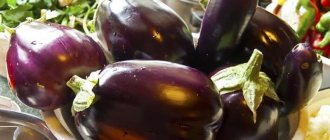Black currant Dachnitsa: description of the variety, photos, reviews
Currants have always been one of the most popular berries, and the variety of existing varieties makes it possible to choose according to local conditions. Currant Dachnitsa is one of the successful hybrids, as evidenced by the description of the variety, photos and reviews.
The Dachnitsa variety was obtained by Siberian breeders by crossing two varieties with similar characteristics, and was zoned for cultivation in the Volga-Vyatka region and in the north-west of the country.
Characteristics of the variety
Currant Summer resident produces low compact bushes of medium density with green, hairless shoots. Lignified branches take on a grayish-brown color. The green, five-lobed leaves are slightly bronzed. Each bush is capable of producing up to 1.5 kg of ripe berries. Despite the early ripening, the harvest is harvested in several stages, which allows you to have fresh berries before later varieties appear.
Currant Black Summer resident produces large berries weighing from 2 to 5 g and are characterized by:
- round-oval shape;
- delicate, thin skin;
- dark blue, almost black, color;
- aromatic sweet pulp - their sugar content is 9.3%;
- high tasting score - 4.6 points out of 5 possible;
- early fruiting - fruiting begins in the third year after planting;
- early ripeness - already in June you can harvest the first currant crop;
- versatility of application;
- frost resistance;
- good yield.
Important! The Dachnitsa hybrid is characterized by good self-fertility, but the addition of other currant varieties for pollination provides higher and more stable yields.
Currant Dachnitsa, as evidenced by the description of the variety, also has minor drawbacks - under the weight of the berries, the bushes bend strongly, and overripe fruits fall off.
Site selection
When planting currants, it is important to choose the right site. It should be open and well lit. A little shading does not prevent the bushes from developing, if you do not overdo it. Currants grow well in fertile, loose soils; light loams are the best choice. However, with proper care, it can be grown on poorer soils. They are pre-enriched with humus and mineral fertilizers, and acidic soils are limed.
Young seedlings of the Dachnitsa variety should not be planted in an area where currants and gooseberries previously grew, since the soil becomes depleted over time and harmful substances accumulate in it. Since the Dacha currant is moisture-loving, low-lying areas protected from the winds would be a good option. But there should be no stagnation of water, otherwise the plants will die.
Pros and cons of culture
When choosing a summer resident for planting on a site, not only the advantages, but also the disadvantages of the variety are taken into account.
See also
Description of the 50 best blackcurrant varieties for different regions
Read
| pros | Minuses |
| Large fruit | Stunted, overloaded lower branches with berries |
| Early fruiting, extended ripening | Low rates of berry transportation |
| Resistance to powdery mildew, mites | Drought intolerance |
| Self-fertility | |
| Stable fruiting |
Planting seedlings
The area chosen for currants must be leveled and dug up, thoroughly cleared of weeds. Holes 40 cm deep are located at a distance of one and a half meters to provide each bush with an optimal feeding area. The holes are filled three-quarters full with a mixture of fertile soil and complex fertilizer. You can plant black currant Summer resident in the spring, but seedlings take root faster and develop better in the fall, around mid-October. During the winter months, the soil around the seedlings will settle, become well compacted, and in the spring the bushes will begin to grow.
Pests and diseases
Plant pests that can affect crops:
- spring cabbage fly, white fly, cutworm:. for control, a dust solution is used, and for prevention, the soil around the roots of plants is sprinkled with sand and naphthalene;
- aphids: to exterminate the pest, an ash decoction is used, preferably tobacco ash; the drug Fitoverm is also effective;
- gray slug: tobacco ash or ash is also used as a preventive measure - the pungent odor repels the pest;
- wireworm (click beetle): this parasite is the larva of a click beetle; it quickly eats the leaves and head of the plant. Frequent and intensive weeding of the soil will help get rid of the larvae, which kills a large number of larvae.
The variety is quite resistant to diseases, but the following can be identified to which the plant may be exposed:
- black leg - when the disease appears, the affected plant must be removed from the garden bed and watering of neighboring plants must be limited;
- clubroot, fusarium - the plant must be destroyed; as a preventative measure, you can treat the soil with a formaldehyde solution.
Reproduction methods
Reviews from summer residents indicate that the currant variety Dachnitsa reproduces well vegetatively - using layering, cuttings or dividing the bush.
Preparation of cuttings
Cuttings can be taken from woody or green shoots. You can start harvesting them in early autumn. Young green cuttings of the current year take root especially well. A well-ripened shoot is cut into cuttings 20 cm long. The cuts should be oblique. They are deepened into the soil in an inclined state, leaving 2-3 buds above the surface. If you follow the care recommendations, they quickly take root and by next spring they will be ready to be transplanted to a permanent place.
Rooting by layering
When propagating the currant variety Dachanitsa by layering, reviews from gardeners recommend choosing a healthy mother bush, characterized by higher fruiting and large berries. The procedure should be carried out in the spring, before the leaves appear:
- a shallow groove is dug next to the bush in a radial direction from it;
- clean it of weeds, fertilize and moisturize it;
- They select the longest shoot on the bush, bend it to the ground and place it in this groove;
- fix it in the groove using wooden slingshots, after cutting off the top to stimulate the remaining buds;
- sprinkle the shoot with moist, loose soil, and when the soil dries, periodically moisten it;
- shoots growing from the buds are spud, leaving their tops open;
- the procedure is repeated until the groove is completely filled with earth;
- You should not stop watering, loosening and removing weeds until the fall, when the roots have completely taken root.
Around mid-autumn, rooted cuttings can be dug up. They are carefully, as shown by the description of the variety and photo of the Dachnitsa currant, cut into pieces and planted in a permanent place.
Dividing the bush
When propagating currants by cuttings or layering, it takes root faster and begins to bear fruit. Dividing the bush is usually done when replanting currants into a new area in autumn or spring. The bush is completely dug up and lightly shaken off the ground. By carefully examining the entire bush, you can identify places where it will be easier to divide it into parts. Each part must have strong shoots and developed roots.
What kind of care does the variety require?
Each variety of black currant, bred in a hybrid way, requires similar techniques that make up the care of the crop. But for each variety there are several distinctive requirements regarding the irrigation schedule, shaping or tying rules.
Irrigation
The summer resident is intolerant to drought, so regular watering is a mandatory requirement for caring for the hybrid. During the flowering and fruiting period, an adult bush needs 2 buckets of warm water weekly. Watering is carried out in a circle near the trunk in order not to wash out the soil from under the trunks.
During dry, hot summer days, it is recommended to water the Dachnitsa currant variety with evening drip sprinkling. This method moisturizes the foliage and shoots.
Feeding bushes
The application of fertilizers to improve fruiting rates is mandatory when caring for the Dachnitsa variety:
- When laying buds, before flowering, nitrogen-containing complexes are added to the soil, these include ammonium nitrate and complex fertilizers.
- When fruits form and berries ripen, calcium and phosphorus are added to the soil; these can be dry granules or solutions of mixtures based on the main elements.
Loosening, mulching the soil
It is recommended to mulch the soil around the currants after planting. To do this, use larch bark or pine needles. Larch bark has bactericidal properties, which helps prevent soil diseases, as well as the appearance of parasitic insects.
See also
For what reasons currants do not bear fruit and what to do about it
Read
Loosening is carried out after each heavy watering or prolonged rain. This helps provide the soil with additional air and does not interfere with the growth of the root system, which depends on the condition of the top layer of soil.
Formative pruning
Bushes of the Dachnitsa variety have a compact size. They are pruned in spring and autumn:
- In spring, damaged, dead branches that cannot adapt are removed.
- In the fall, bushes are pruned to prepare for wintering.
In addition, in summer pruning can be corrective in nature. This means that shoots are removed that block access to the sun for the main part of the plant.
Cold protection
Despite the fact that the variety has high frost resistance, in regions with possible low air temperatures in winter, the bushes are additionally covered. Newly planted seedlings that have not reached two years of age are also covered.
The bushes are pruned to 4-5 buds, then carefully bent to the ground and covered with agrofibre or burlap. To prevent the material from unfolding from strong winds, it is secured with twine or nylon rope. The tree trunk circle is loosened, a protective trench is made, and the soil around the trunk is mulched.
Diseases and pests - treatment and prevention
The Dachnitsa variety is resistant to powdery mildew and spider mites. The main threat to this species is anthracnose. This fungal disease can destroy the season's harvest. Infection occurs in stages: first the root system is affected, then the condition of the above-ground part gradually worsens.
The main measures to combat anthracnose are spraying bushes with Bordeaux mixture in the early stages of infection.
Currants are often colonized by aphid colonies, which cause leaves to curl, turn yellow, dry out, and fall off. For aphids, systematic treatments are carried out with tobacco or soap solutions. They help to completely get rid of adult individuals and destroy their clutches.
Berry garden care
The rules for caring for black currant summer resident are quite simple according to the description and consist of carrying out timely procedures for watering, pruning, and preventive treatments.
Bush pruning
Systematic pruning of black currants allows you to maintain the stability of yields and increases the period of fruiting. It is required:
- to stimulate the growth of young shoots;
- removing old diseased branches;
- pruning of five-year-old shoots that no longer bear fruit, but consume nutrients and water;
- sufficient aeration of the bush and eliminating the likelihood of fungal diseases and the formation of shoots of different ages.
Pruning should be carried out starting from the first year after planting currants, during a period when there is no sap flow - late autumn or early spring. It should be taken into account that black currant Dachnitsa, according to reviews, does not form tall and spreading bushes. In order to get a voluminous bush, after planting, cut off all the shoots, leaving 3-4 buds on them.
The next year, from the numerous young branches, a few of the strongest ones are left, which do not interfere with each other. Their tops are pinched at the beginning of summer to form new side shoots. Further pruning consists of:
- in removing dried or diseased branches;
- eliminating thickening by pruning excess shoots;
- pinching annual shoots;
- shortening 2-3-year-old shoots to 4 buds.
Important! After pruning, you need to treat all cuts with garden varnish.
Organization of watering
Lack of moisture negatively affects the development of currant bushes of the Dachnitsa variety:
- they slow down their growth;
- the fruits become smaller;
- harvest decreases;
- bushes can freeze in winter.
The currant root system is located close to the surface, so it needs moisture, especially during active development:
- during the flowering period;
- formation of ovaries;
- fruit ripening;
- after harvesting, before wintering.
In dry seasons, currants need to be watered abundantly every week - up to 2 buckets for each bush. It is better to pour water into circular grooves dug at a distance of 20-30 cm from the stem. On hot days, it is recommended to spray the leaves of the Dachnitsa currant with water.
Landing technology
It is no secret to experienced gardeners that the choice of location for seedlings, as well as compliance with planting rules, affect the growth and development of the future shrub. When preparing a site for currants, take into account that the bush is capable of growing in one place for 10 to 15 years.
Selecting a location
For currants, choose open, illuminated areas along hedges or fences, with the necessary indentation for root growth. About 2 meters are left between the bushes so that the roots of the seedlings do not interfere with each other.
Currants prefer fertile loose soils and light loams. It is prohibited to plant young seedlings of Dacha in places where other varieties of currants or gooseberries had previously grown.
Low-lying areas where moisture can accumulate are excluded. For currants, choose places that are protected from draft winds.
Recommended planting dates and patterns
Currant seedlings are planted in autumn or spring. It depends on the individual preferences of gardeners:
- spring planting begins long before the buds on the seedlings swell;
- In the fall, the bushes are buried in the soil so that before the first frost the roots have time to adapt and get used to the soil.
Preparing the planting hole and seedling
For a planting hole, dig a hole 40 centimeters deep, then fill the hole with a fertile mixture consisting of soil and complex fertilizers. When choosing a seedling, pay attention to the root system. The general condition of seedlings is assessed according to several criteria:
- the root system should not have dry areas or damage;
- the bush should consist of 2 or 3 stems;
- Viable buds must be formed on the shoots.
Planting rules
Currants are planted in a straight line along hedges or fences. A distance is left between the bushes for the growth of the fibrous root system. Between the rows of subsequent plantings there should also be space necessary for the design of the tree trunk circle, mulching and installation of fencing elements.
Reviews from gardeners and summer residents
Kupelnikova Nadezhda, 45 years old, Nizhny Novgorod
We have long liked the Dachnitsa variety of currants for its wonderful dessert taste and healing properties. The variety is self-pollinating, but we plant several bushes of other varieties nearby. As a result, we get larger berries and a good harvest. It is good to use currants in any form - in the summer there are always fresh berries on the table, and for the winter we prepare jam. Excellent variety.
Shapovalov Igor, 67 years old, Kirov
Summer currant has taken root well in our area and produces good harvests. The variety responds excellently to fertilizing and timely watering. Every autumn I carry out formative pruning to ensure good air permeability of the bushes. I have already planted cuttings from the first plants.
Grishina Maria, 54 years old, Belozersk
Currants of the Dachnitsa variety are a real find for our climatic conditions; thanks to early ripening, the berries have time to gain sweetness. Currants are unpretentious in care - the usual rules of agricultural technology are enough. The fruits are universal in use - for the winter we prepare jams, jams, and freeze the berries. We use currant leaves as an aromatic addition to tea.
Kroshkin Valentin, 70 years old, Vladimir
Three years ago I bought one Dacha currant bush and really liked its taste. Last year I took cuttings from it, and they took root perfectly. This year we had a good harvest. I think this is a very successful variety.
